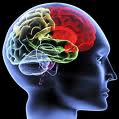Could Phlogistix Salvage the NFL’s Concussion Protocol?
In light of Richard Sherman publicly stating the NFL’s concussion protocol is “a joke”, Phlogistix CEO and President Barry W. Festoff, M.D. was interviewed by Derek Helling for Advocacy for Fairness in Sports to address potential applications of Phlogistix’s technology to the NFL’s concussion protocol. Dr. Festoff outlined the benefits of possible use of Phlogistix technology on the sidelines of NFL games to swiftly and accurately diagnose brain trauma, moreover, his application could be used beyond the NFL in many contact sports. Phlogistix’s objective diagnostic technology could replace the subjective written tests given to players as the standard to diagnose concussions in some contact sports.
